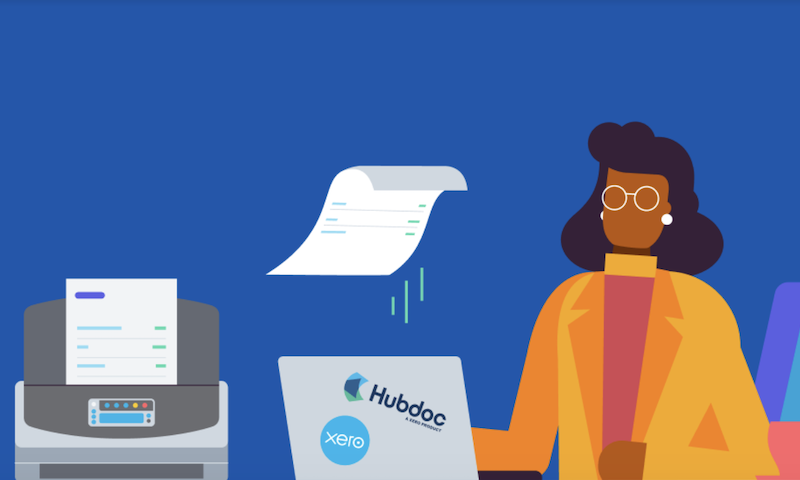
The management of source documents – bills, invoices, receipts or anything substantiating a transaction – is critical for small business compliance. They’re also important for accurately and efficiently completing the accounting process, and ultimately, providing informative business insights.
However, there are often a few questions that arise when it comes to source document management best practices. Whether you are an accountant or small business owner, you’ll agree that source documents are a lot of administrative effort to collect and manage. It’s also estimated that up to 25% of a firm’s office space could be used for paper document storage (download our free ebook – Building a paperless practice).
Accountants are uniquely positioned to help their small business clients better manage source documents. Let’s break down some frequently asked questions to better understand why and how.
Who should manage source documents: the accountant or the client?
The nature of every relationship between a business owner and their outsourced accountant is different. However, a simple way to improve your client relationships is by taking more administrative tasks off their hands – tasks such as document management.
Based on conversations with leading accounting professionals, it’s evident that outsourced accountants who play a significant role in helping their small business clients collect and manage source documents are more likely to have stronger client relationships.
Beyond helping SMEs better manage their source documents for compliance-related reasons (for example, helping them get through a routine audit), accountants who manage source documents are able to provide more accurate reconciliation. This leads to more meaningful business insights. As a result, the client tends to be happier with the services they receive and are more likely to want to subscribe to more accounting services.
This isn’t to say that business owners should neglect their responsibility in keeping track of source documents. Rather, since source documents are important to the compliance process, accountants should take the opportunity to play a leading role in helping their clients better manage their documents.
Why are source documents important for accounting?
Source documents are vital for business compliance and audit preparation. It’s important to understand the types of documentation that are required for small businesses to remain compliant in the region(s) you serve. For example, by keeping up-to-date on the statutory requirements in the countries where your clients conduct business.
Source documents are also important for improving accounting data quality. Best-in-class accountants will avoid reconciling directly from a bank statement whenever possible to ensure each transaction can be verified with a source document. Having source documents readily available will not only make the reconciliation process faster, easier, and more accurate, it will also help to gather clean data, which can then be translated into business insights.
Which brings us to our next question. Source documents are traditionally painful to collect, often requiring several low-value client interactions and confusing back-and-forth communications. So how can they be efficiently collected and managed?
What’s the best way to collect and manage source documents?
One of the best ways to collect and manage source documents is to do so digitally. That is, to implement a process and technology that will automate and digitise document management for you.
There are a number of benefits to digitising document collection and management. From disaster-proofing, to mitigating physical storage space, to facilitating flexible and remote work. Perhaps best of all, finding a single system for digitising and collecting source documents will allow for one, centralised document storage solution. This makes all documents readily available when you need them.
When you activate Hubdoc and Xero for your clients, you can furnish source documents to you simply by snapping a photograph on Hubdoc’s mobile app, or send them to Hubdoc via email. When documents are added to Hubdoc, the data is automatically extracted, digitally filed and easily searchable. The end result? You spend less time chasing your clients for documents, and have all the information you need to offer insightful business advice. All the while, you’re automating some of the manual processes that are traditionally time-consuming.
Moreover, Hubdoc integrates with cloud storage platforms (Box, Dropbox, ShareFile, SmartVault, and Google Drive). It also provides the option to push documents to Xero Files, providing redundant backup for easy client access. When integrated with cloud accounting platforms such as Xero, you can publish source documents to create and match to transactions in the bank feed, with the source document automatically attached. Request a demo of Hubdoc here.
Digitising document collection might require some change management. You will have to ensure that both your staff and clients see the value, and are trained on their responsibilities in the system. For example, clients will need to get used to taking photos of receipts when they’re on the go.
Or, by implementing tools like Hubdoc, clients can continue to submit paper documents and your firm can take care of the digitisation, providing even more value to your clients.
Having a digital and centralised system for document management can also provide peace of mind to clients who might be anxious about keeping track of documents for audit purposes. In the event of an audit, having all documents readily available in one place will help to ensure the audit process goes smoothly.
Accountants who can help their small business clients digitally manage their source documents are able to provide additional value. Better yet, you’ll be able to further position yourself as an advisor by helping your clients move into an increasingly digitally-enabled world.
Leave a Reply